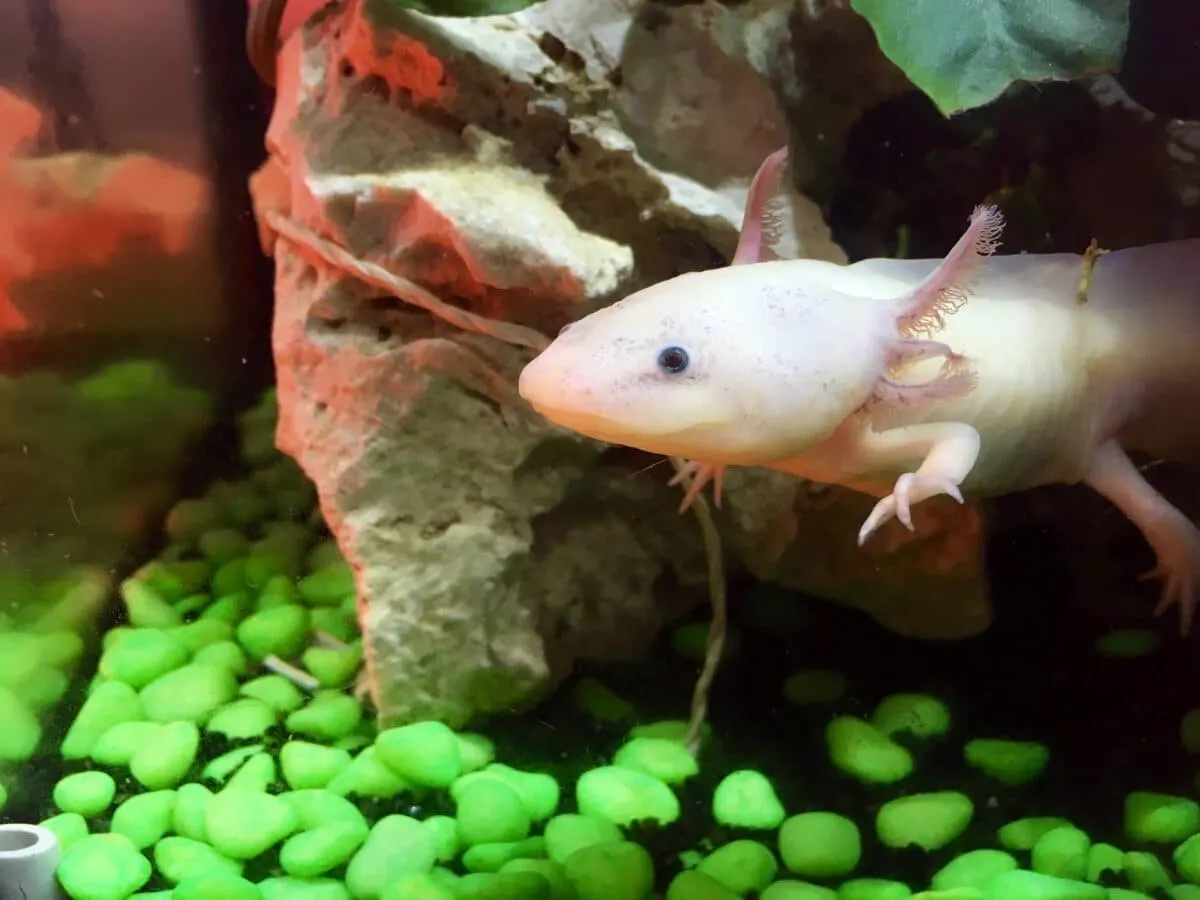Are you ready to dive into the fascinating world of baby axolotls? These adorable creatures, also known as Mexican walking fish, are unlike any other aquatic species.
In this informative and captivating article, we will explore the physical characteristics, habitat, feeding habits, and health care of baby axolotls.
- Did you know that baby axolotls can regenerate their limbs and parts of their spinal cord?
- Or that they come in various vibrant colors, from pink to black and everything in between?
We’ll also uncover some of the most exciting and unique facts about these quirky creatures, including some behaviors that will leave you in awe.
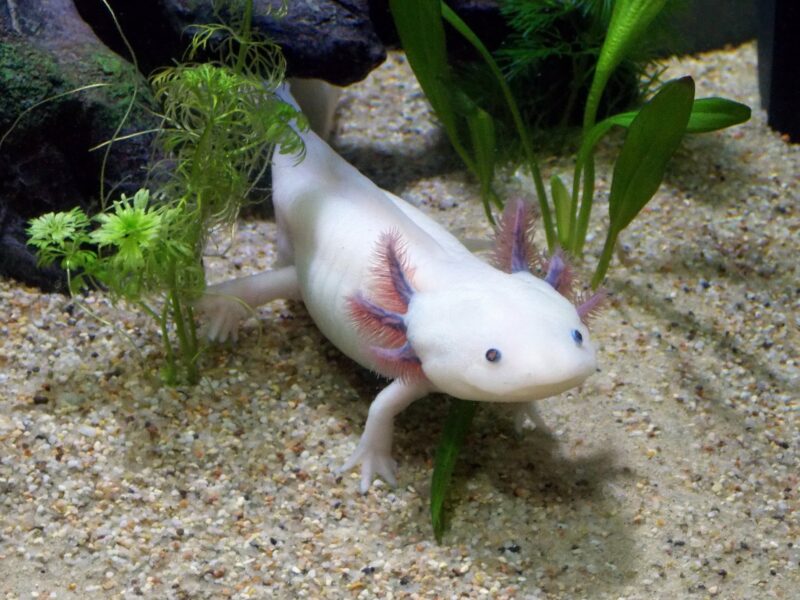
So, buckle up, grab your snorkel, and get ready to take a plunge into the world of baby axolotls!
Physical Characteristics
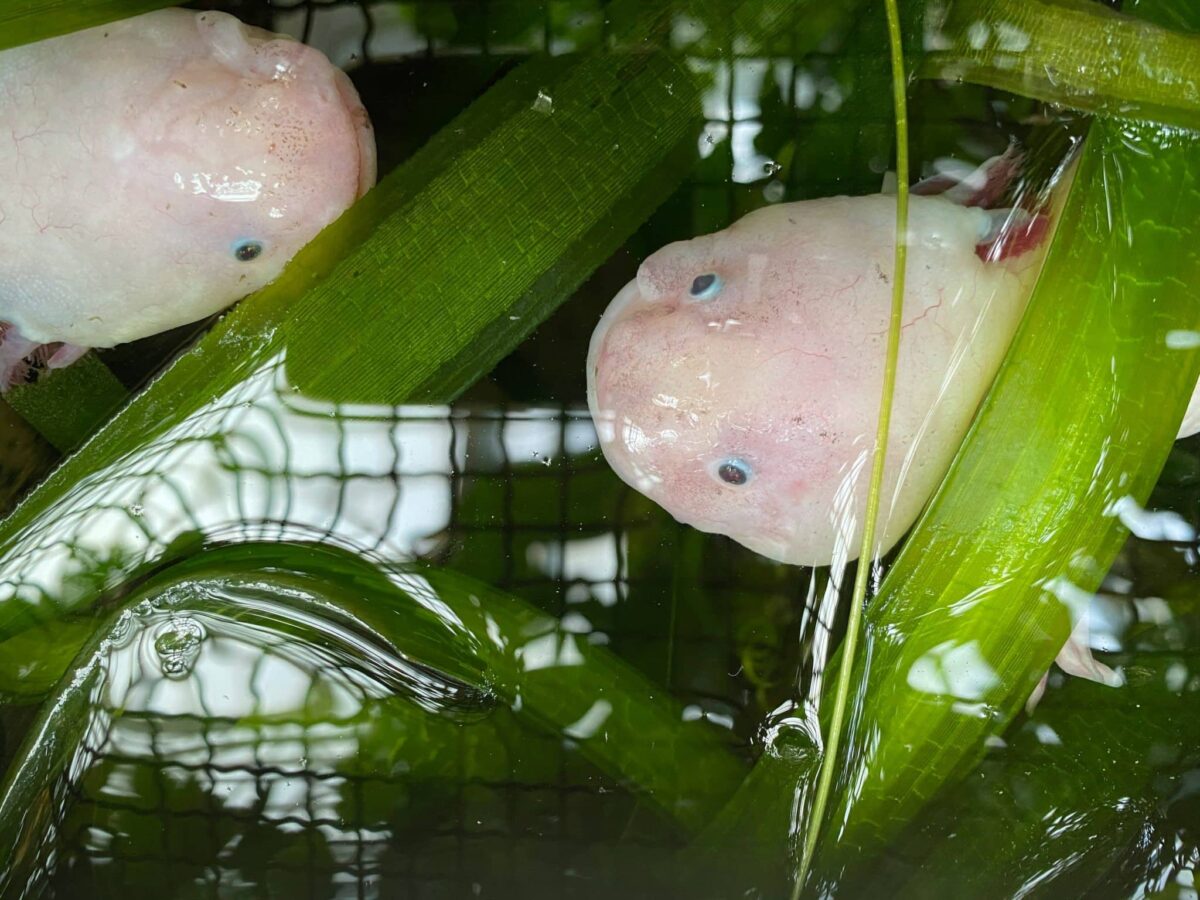
Baby axolotls are one of the most unique and fascinating creatures on the planet. They are small, typically only measuring between 1-2 inches in length, and come in a range of colors.
The most common colors for baby axolotls are pink, gray, brown, and black, but they can also be found in a variety of other shades.
One of the most distinctive features of a baby axolotl is their head shape. They have a wide, smiling mouth, and their eyes are positioned high on their head, which gives them an almost cartoon-like appearance.
The overall shape of their body is long and slender, with a tail that helps them easily swim through the water.
How do they differ from adult axolotls?
While baby axolotls are undeniably cute, they look quite different from adult axolotls. As mentioned earlier, baby axolotls never fully undergo metamorphosis, meaning they retain their gills and fins throughout their entire life. In contrast, adult axolotls undergo metamorphosis and lose their gills, developing lungs to breathe air.
Another major difference between baby and adult axolotls is their size. Adult axolotls are much larger than their baby counterparts, often measuring up to 12 inches in length. They also come in a wider variety of colors, with some adult axolotls having a speckled or mottled appearance.
Despite these differences, both baby and adult axolotls share many of the same physical characteristics, such as their distinctive head shape, long and slender body, and tail that helps them swim through the water.
Overall, the physical characteristics of baby axolotls are undeniably unique and fascinating. Whether you’re a seasoned axolotl enthusiast or someone who’s never heard of these quirky creatures before, it’s hard not to be captivated by their cute and distinctive appearance.
Where Do Baby Axolotls Live?
Baby axolotls are fascinating creatures, and understanding their natural habitat can help us appreciate their unique adaptations and appreciate the importance of their conservation. Native to Mexico, baby axolotls are found in two lakes: Lake Xochimilco and Lake Chalco, both located in the Valley of Mexico.
Lake Xochimilco
Lake Xochimilco is a UNESCO World Heritage site and one of the largest remaining urban wetlands in the world.
It is a crucial ecosystem that provides habitat for over 200 species of plants, fish, and animals, including the Mexican salamander, better known as the axolotl.
What makes Lake Xochimilco particularly unique is its floating gardens or chinampas. These artificial islands were created by the Aztecs over 1,000 years ago by dredging the lake’s mud and creating fertile soil beds.
They are still used today to grow crops, such as maize and flowers, and are a testament to the rich cultural heritage of Mexico.
Despite its importance, Lake Xochimilco is under threat from pollution, urbanization, and climate change. The axolotl population in the lake has declined significantly in recent years, and conservation efforts are underway to protect their habitat and prevent their extinction.
Lake Chalco
Located to the east of Lake Xochimilco, Lake Chalco is a smaller lake that has undergone significant changes over time. Originally a natural lake, it was drained in the 20th century to create agricultural land, resulting in the loss of its unique ecosystem.
Despite these challenges, Lake Chalco is still home to a diverse range of aquatic species, including the axolotl. Efforts are now underway to restore the lake’s wetlands and revive its ecological balance.
Get more Axolotl Facts.
The Optimal Environment for a Baby Axolotl
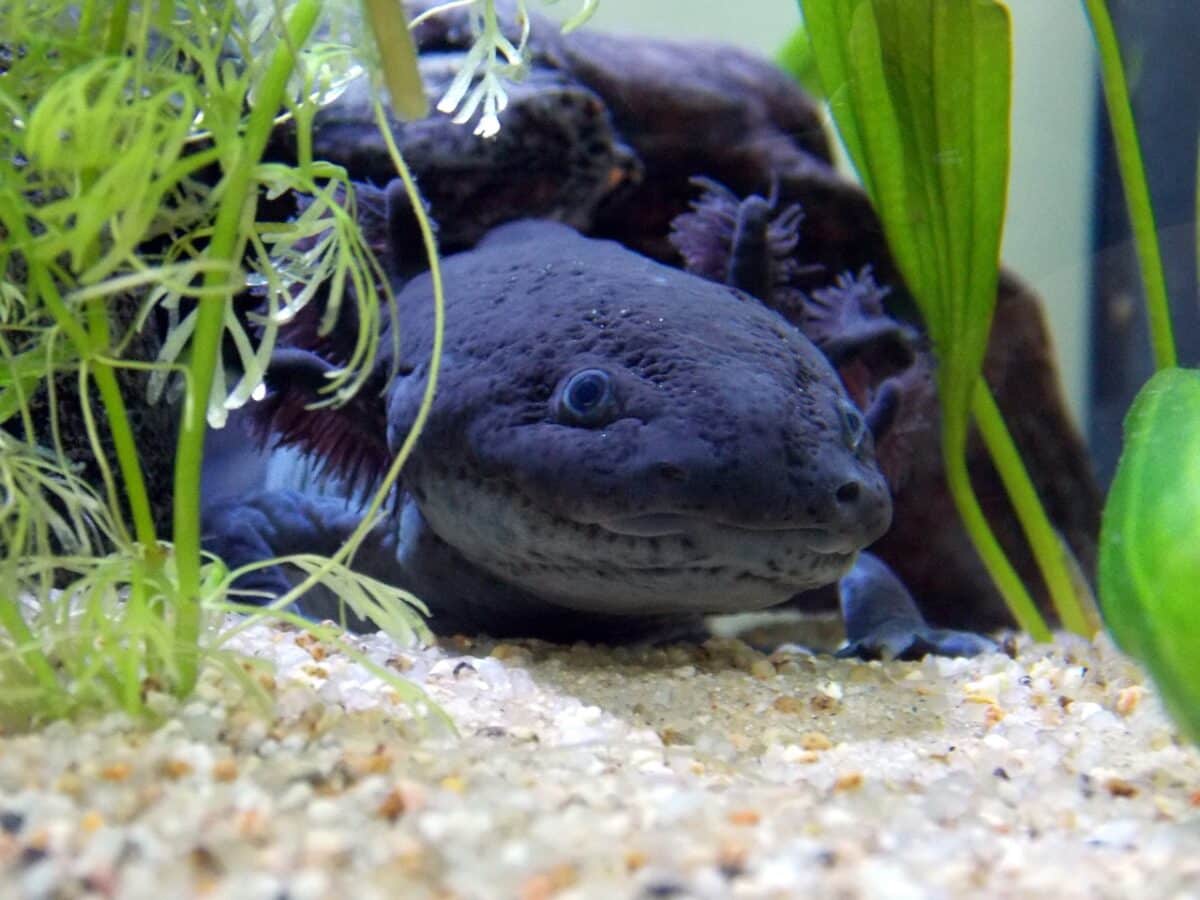
Creating the optimal environment for a baby axolotl is essential to their growth and well-being.
Axolotls are aquatic creatures that require a specific set of conditions to thrive, and providing these conditions will ensure that they live a happy and healthy life.
Tank Size and Water Quality
The first consideration when setting up a tank for a baby axolotl is size. A tank that is too small can limit the axolotl’s growth and lead to health problems, so it’s important to choose a tank that is at least 20 gallons in size.
Water quality is also essential for the health of a baby axolotl. Axolotls are sensitive to changes in water quality and require a filtration system that can handle their waste. The water should also be dechlorinated and maintained at a temperature between 60-68°F (15-20°C).
Decor and Hiding Places
Baby axolotls are nocturnal creatures that enjoy having hiding places in their tank. Adding live plants, rocks, and driftwood can create a natural environment for the axolotl to explore and feel secure.
Decor and hiding places also serve the purpose of creating an interesting and dynamic environment for the axolotl. Axolotls are intelligent and curious animals that enjoy exploring their surroundings and interacting with their environment.
Lighting
Axolotls require a consistent lighting schedule to regulate their circadian rhythms. A lighting system with a timer can provide a consistent light cycle for the axolotl, which can help regulate their behavior and ensure they get enough rest.
It’s also important to consider the type of lighting used in the tank. Bright lighting can be stressful for the axolotl, so it’s recommended to use a low-wattage bulb or natural light. Additionally, albino axolotls require a shaded area in their tank to prevent overexposure to light.
Diet for Baby Axolotls
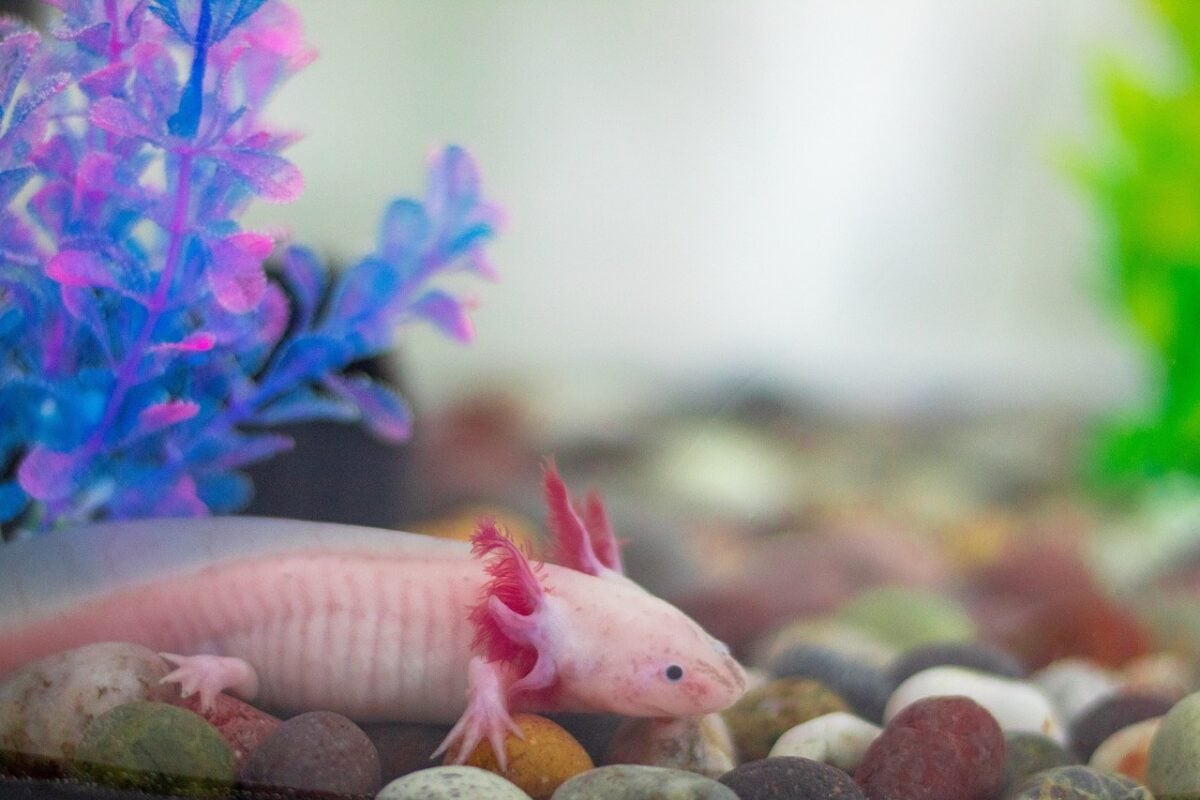
A well-balanced diet is crucial for the growth and development of a baby axolotl. Baby axolotls require a diet rich in protein to support their rapid growth and development during their early life stages. A diet that is deficient in protein can lead to health issues, such as stunted growth and a weakened immune system.
What Do Baby Axolotls Eat?
Baby axolotls are carnivorous and require live food for proper nutrition. In the wild, they feed on small fish, shrimp, and insects. In captivity, they can be fed a variety of live foods, such as bloodworms, brine shrimp, daphnia, and small pieces of earthworms.
Live foods are essential for baby axolotls, as they provide the necessary protein and nutrients needed for their growth and development.
Live foods are also more appealing to baby axolotls, as they trigger their natural hunting instincts and provide mental stimulation.
Feeding Schedule
Baby axolotls should be fed small amounts of food twice a day, as they have a high metabolism and require frequent feeding to support their growth. Overfeeding should be avoided, as this can lead to health issues such as obesity and digestive problems.
It’s important to monitor the axolotl’s behavior during feeding, as they can be picky eaters and may refuse to eat certain types of food. If the axolotl is refusing to eat, it’s best to try different types of live food until you find one that they enjoy.
Supplements
In addition to a diet rich in live food, baby axolotls may benefit from the addition of vitamin and mineral supplements to their diet. Calcium supplements are particularly important, as they help to support the development of strong bones and prevent calcium deficiencies.
Supplements can be added to the live food before feeding, or can be provided in the form of a supplement block that slowly releases the necessary nutrients into the water.
Protein-rich Foods
The main component of a baby axolotl’s diet should be protein-rich foods, such as small pieces of earthworms, bloodworms, or brine shrimp. These can be purchased frozen or live from pet stores or online retailers.
It’s important to avoid feeding baby axolotls any large or hard foods, as they can be difficult for them to swallow and digest. Live foods should be rinsed in clean water before feeding to remove any excess dirt or debris.
Variety in Diet
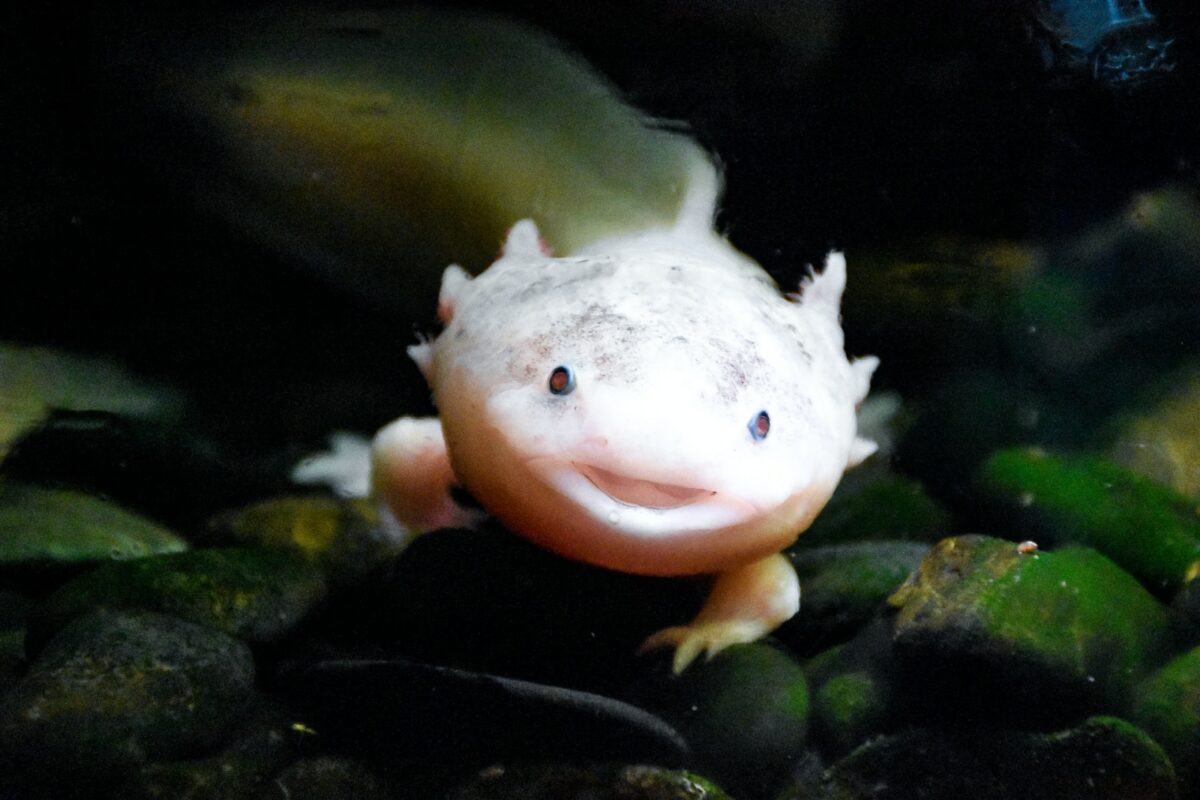
Variety in Diet for Baby Axolotls
Feeding baby axolotls a varied diet is important for their overall health and development. Providing a range of protein sources, vitamins, and minerals can help support their growth and wellbeing.
Here are the top 7 benefits of offering a variety of foods to your baby axolotls:
- Prevents Nutritional Deficiencies
Feeding baby axolotls a diverse diet can help prevent nutritional deficiencies, which can lead to stunted growth, weakened immune systems, and other health issues. Providing a range of protein sources, vitamins, and minerals can help ensure that your axolotl is getting all the nutrients they need to thrive.
- Encourages Healthy Eating Habits
Offering a variety of foods can help encourage healthy eating habits in baby axolotls. By exposing them to different textures, flavors, and types of food, you can help prevent picky eating behaviors and ensure that they are willing to try new foods as they grow.
- Promotes Growth and Development
Providing a varied diet can help support the growth and development of baby axolotls. Different types of protein sources, such as earthworms and bloodworms, offer different nutritional benefits that can help promote healthy bone and muscle growth.
- Enhances Digestive Health
Feeding baby axolotls a variety of foods can help enhance their digestive health. Different types of protein sources offer different levels of fat and fiber, which can help promote healthy digestion and prevent issues such as constipation.
- Boosts Immune System
Offering a variety of foods can also help boost the immune system of baby axolotls. Vitamins and minerals found in different types of food can help support the immune system and keep your axolotl healthy and disease-free.
- Prevents Boredom
Providing a varied diet can help prevent boredom in baby axolotls. Axolotls can get tired of eating the same thing every day, just like humans, so offering different types of food can help keep mealtime interesting and engaging.
- Improves Mental Health
Finally, offering a variety of foods can help improve the mental health of baby axolotls. Like all animals, axolotls benefit from mental stimulation and enrichment, and offering different types of food can help provide that stimulation and keep them happy and engaged.
Avoiding Overfeeding
Overfeeding can lead to health issues such as obesity and fatty liver disease, so it’s important to be mindful of the amount of food being given. One way to ensure that baby axolotls are getting the appropriate amount of food is to monitor their weight and adjust feeding accordingly.
Maintenance and Monitoring for Baby Axolotls
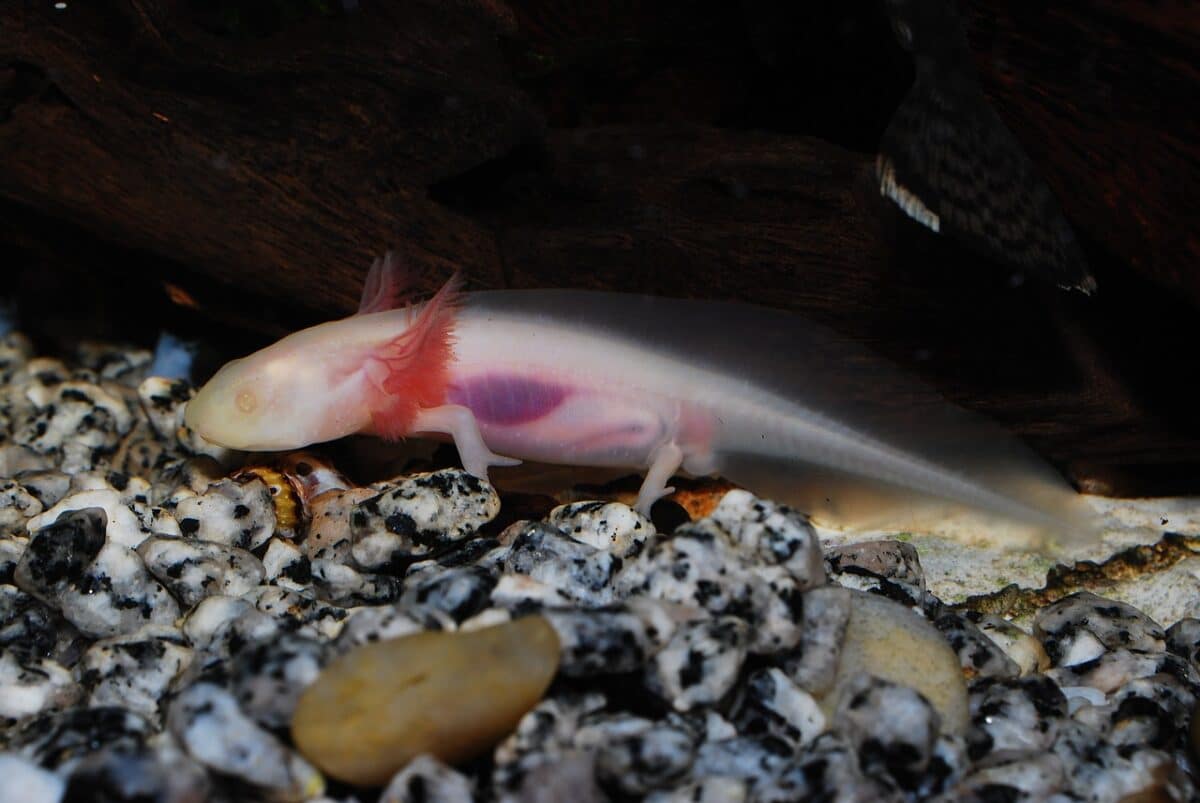
Caring for a baby axolotl involves more than just feeding them a well-balanced diet. It’s important to maintain a clean and safe environment and monitor their behavior and health to ensure they are thriving in their new home.
- Tank Setup
The tank setup for baby axolotls should include a few essential components to ensure their safety and comfort. The tank should be at least 20 gallons in size, as baby axolotls require plenty of room to swim and explore.
The tank should be kept at a temperature between 60-68°F, as axolotls are cold-water animals and can become stressed or sick in warmer temperatures. A heater may be required to maintain a consistent temperature, depending on the ambient temperature of the room.
The tank should also include a filter to keep the water clean and remove waste and uneaten food. A gentle flow rate is recommended, as strong currents can stress and exhaust the axolotls. Live plants can also be added to the tank to provide additional oxygen and a natural environment for the axolotls.
- Water Quality
Maintaining good water quality is crucial for the health and well-being of baby axolotls. The water should be tested regularly for pH, ammonia, nitrite, and nitrate levels to ensure they are within the acceptable range. Regular water changes should be performed to remove any waste or uneaten food and maintain a healthy environment for the axolotls.
It’s important to note that axolotls are sensitive to chemicals and should not be kept in a tank that has been treated with any type of chemical medication or cleaner.
- Behavior and Health Monitoring
Monitoring the behavior and health of baby axolotls is important to catch any issues early on and provide appropriate care. Baby axolotls should be active and curious, swimming around the tank and exploring their environment.
Any signs of lethargy, loss of appetite, or abnormal behavior should be noted and investigated. These symptoms can be an indication of stress, illness, or poor water quality.
It’s also important to monitor the axolotl’s physical appearance for any signs of injury or disease. Common health issues for axolotls include fungal infections, bacterial infections, and parasites. If any issues are suspected, a veterinarian with experience in treating axolotls should be consulted.
How Long Do Baby Axolotls Live?
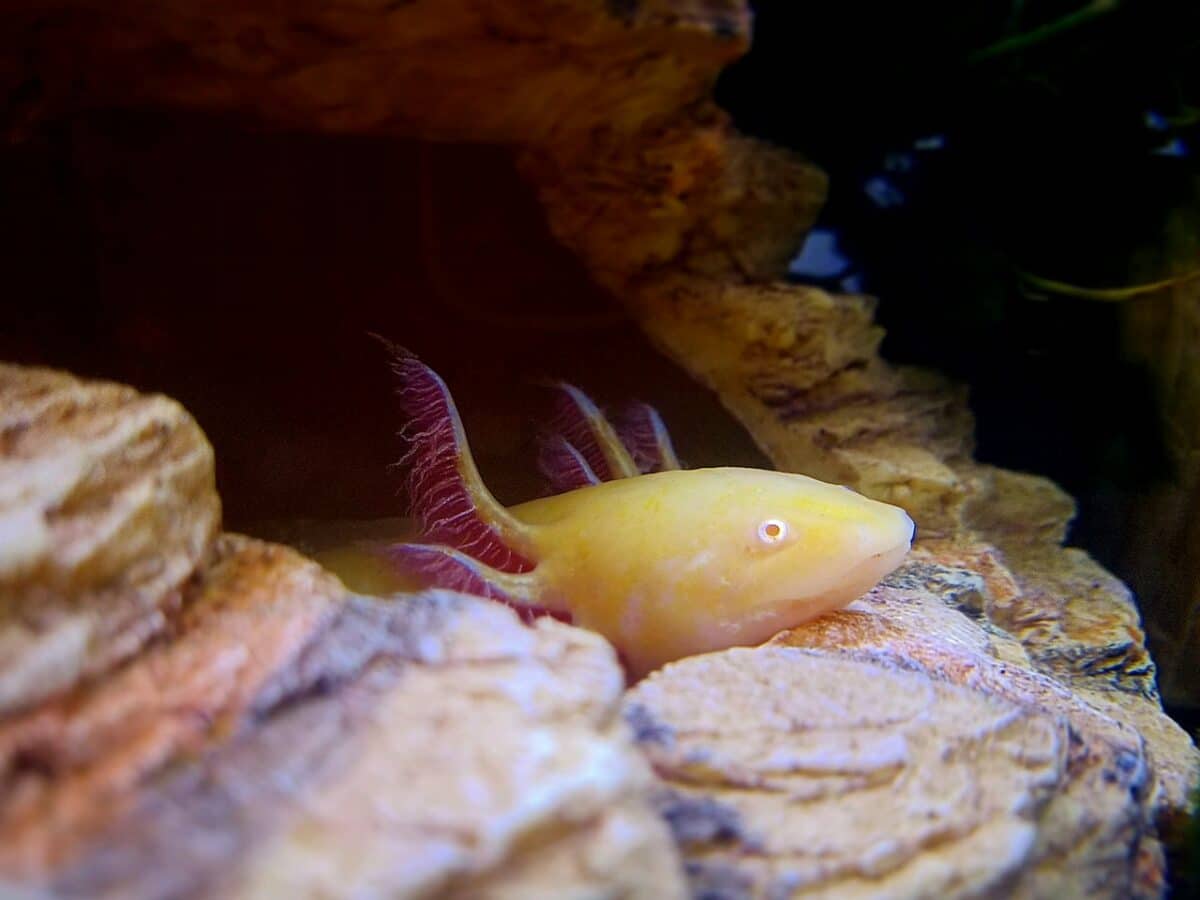
Axolotls are known for their longevity, and baby axolotls can live just as long as their adult counterparts when provided with the proper care and maintenance.
The average lifespan of a baby axolotl can range anywhere from 10 to 15 years, with some living up to 20 years or more. However, there are several factors that can impact the lifespan of your baby axolotl, and it’s important to monitor their health and wellbeing to ensure they are living their best life.
Factors that Affect Lifespan
Several factors can impact the lifespan of a baby axolotl, including genetics, diet, environment, and overall health.
Genetics play a large role in the lifespan of axolotls, and some individuals may have a predisposition to certain health issues that can impact their lifespan.
Diet is also important, as a well-balanced diet can help support overall health and prevent nutritional deficiencies. The environment in which your axolotl lives can also impact their lifespan, as poor water quality or inadequate temperature can lead to stress and disease.
So, are axolotls poisonous?
The answer is no, axolotls are not poisonous. They do not produce any toxic substances that could harm humans or other animals. However, there is one important caveat to this: axolotls do have a defense mechanism that could be harmful if ingested.
Mucus Coating
Axolotls are covered in a slimy mucus coating that serves several purposes. This coating helps to protect the axolotl’s skin from damage, regulates the axolotl’s water and salt balance, and even contains antimicrobial properties.
However, this mucus coating can also be a defense mechanism for the axolotl. When threatened, axolotls can release a large amount of mucus, which can make it difficult for a predator to grab onto the axolotl or swallow it whole.
While the mucus coating itself is not toxic, it could potentially cause digestive issues if ingested in large amounts. However, this is unlikely to happen unless someone intentionally tries to eat an axolotl or the mucus coating. In general, axolotls are completely harmless and pose no threat to humans.
Fascinating Axolotl Facts
Now that we’ve answered the question of whether axolotls are poisonous, let’s take a look at some other fascinating facts about these unique creatures:
- Axolotls are native to Mexico, where they were considered a delicacy by the Aztecs.
- Axolotls are known for their incredible regenerative abilities. They can regrow limbs, spinal cord tissue, and even parts of their brain.
- Axolotls are fully aquatic, meaning they spend their entire lives in water.
- Axolotls are also known as Mexican salamanders or Mexican walking fish, even though they are not fish at all.
- Axolotls have the ability to change their skin color and pattern to blend in with their surroundings.
- Axolotls are considered endangered in the wild, mainly due to habitat loss and pollution.
Conclusion on the Baby Axolotl
Baby axolotls are truly remarkable creatures that captivate the hearts of many. From their cute and quirky appearance to their unique regenerative abilities, they continue to intrigue scientists and pet enthusiasts alike.
Caring for these adorable creatures can be a fulfilling experience, but it requires a deep understanding of their needs and behavior.
Whether you are a seasoned axolotl owner or considering adding a baby axolotl to your aquatic family, it is important to remember that these creatures are not just pets but living beings that require proper care and attention.
With their playful personalities and curious nature, they are sure to bring joy and wonder to your life. Embrace the challenge of caring for these incredible creatures, and join the growing community of axolotl enthusiasts who have fallen in love with these cute and quirky marvels of the aquatic realm.
Read more about the world of Amphibians or about awesome Cute Frogs.
Join our Forum for free today!

- These are The 5 Largest Great White Sharks Ever Recorded - July 19, 2024
- The Surprising Benefits of Big Game Hunting - July 18, 2024
- $100k+ Hunting Experiences The Most Expensive Animals to Pursue - July 17, 2024

